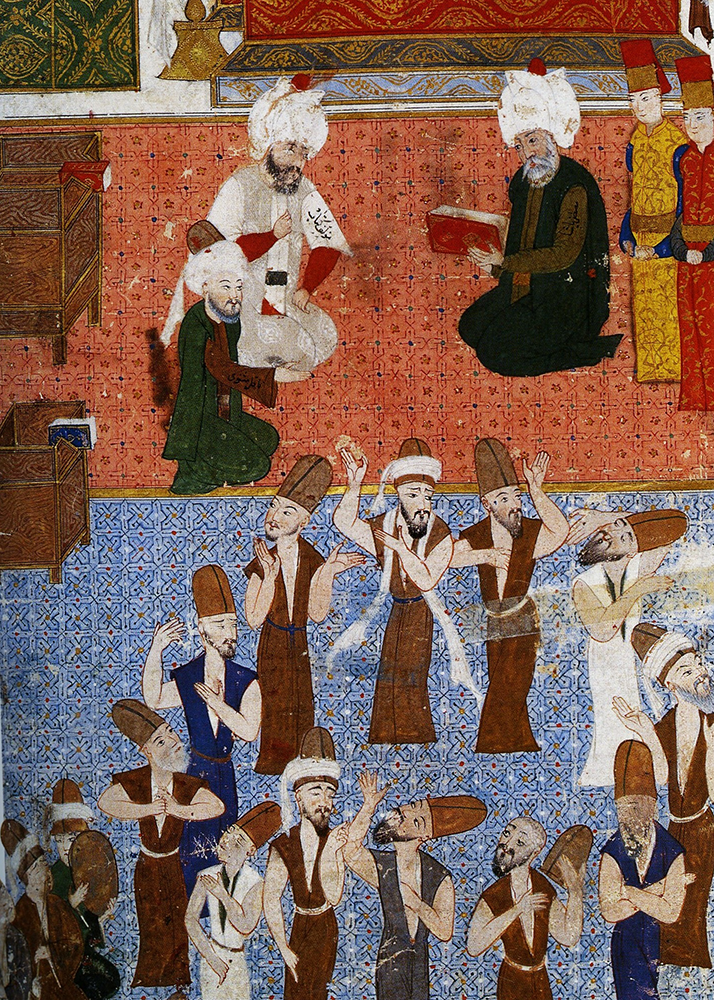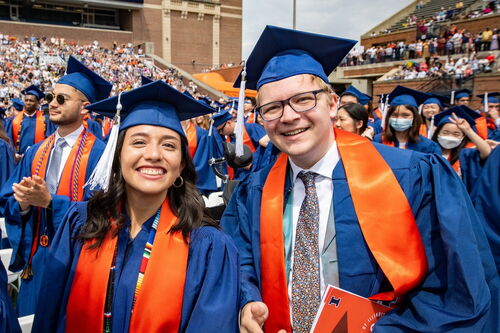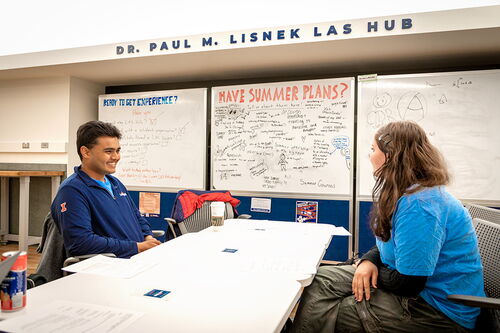(Course)Sharing knowledge across the Big 10

Great results come from great collaboration. CourseShare, a shared project of the Big 10 Academic Alliance, has provided students at Illinois and elsewhere with increased access to specialized language courses since its creation in 2005. Now, the program has expanded to include courses in literature and culture.
“CourseShare stems from the realization that as institutions we can use our resources more effectively if we work together,” said Karen Carney, associate dean of the College of LAS and coordinator of the CourseShare program at Illinois.
CourseShare enables students at any Big 10 campus to take classes that might not be offered at their home university, at no additional cost to enrolled students. The idea is that each institution will host some courses and receive others, so that everyone benefits.
“We don’t all have the same areas of strength, which is why the Big Ten Academic Alliance and the CourseShare program are so beneficial,” Carney said.
CourseShare is one feature of the Big 10 Academic Alliance, previously known as the Committee on Institutional Cooperation, which was formed in 1958 as the academic counterpart to the athletic aspect of the conference. It’s overseen by the provosts of all 14 Big Ten schools, with its headquarters at Illinois.
Typically there are 15-20 students each semester enrolled in CourseShare courses, but during this past fall semester there were a total of 31 Illinois students taking courses at other universities, and six courses being offered to students from other universities.
The majority of CourseShare courses are less commonly taught languages (LCTLs), which students may need for study abroad or research purposes. Two externally funded course clusters, in Korean studies and Islamic studies, have also been created in recent years. In all, more than 90 courses have been shared since the program started, with about 65 being LCTLs.
In a CourseShare class, students proceed to a classroom at a set time and place just like a normal class. The difference is that instead of having their professor and classmates in the room, they connect to a classroom on another campus through high quality video and audio equipment.
Registering for such a class is no different than registering for an on-campus course, and students can talk to their academic advisors about CourseShare or look through the university’s course explorer for more information. A listserve enables coordinators at each Big Ten campus to connect students with faculty teaching courses of interest to them.
“Usually students talk to faculty about classes they are interested in taking, or faculty will talk to their colleagues at another institution to identify CourseShare courses, and I try and help coordinate the process of getting students in classes they want,” Carney said.
Valerie Hoffman, professor and head of the Department of Religion, teaches courses under the Digital Islamic Studies Curriculum (DISC). The DISC initiative was established in 2015 with funding from the Mellon Foundation to expand CourseShare beyond language courses to include courses on culture.
Hoffman recently taught Muslim Ethics in Global Age (RSLT 481), focusing on the exploration of contemporary, often revisionist Muslim ideas on a broad range of ethical issues that face societies today.
Students at the University of Michigan received this course using videoconferencing technology, while it was taught face-to-face to students here at Illinois. This was a seminar course, so students sit around a table in a classroom at Illinois, and converse with students in their Michigan classroom.
It’s the second course Hoffman has taught through the DISC program. In spring 2016, she taught Mystics and Saints in Islam (RLST 260), which was shared with Michigan State University. In fall 2016, Illinois received MSU’S Introduction to Islam course, which corresponded to RLST 214 on the Illinois campus, and this coming fall, Illinois will receive Islam in South Asia, a course taught at the University of Michigan, which will be taught at Illinois as REL 494.
“This program gives students the opportunity to study with professors that they may not have ever had the chance to interact with or learn from before,” Hoffman said.
The CourseShare courses are typically held in classrooms that are specially equipped for videoconferencing, with wide-scope cameras and microphones hanging from the ceiling throughout the room. Software such as BlueJeans and Zoom—for video chatting—complements the equipment to make the process smoother.
The program offers some benefit to faculty, too, as it creates another avenue to collaborate with colleagues at other universities.
“It was really good for me to meet people at Michigan. I was able to interact with so many great professionals and individuals within academia,” Hoffman said.








